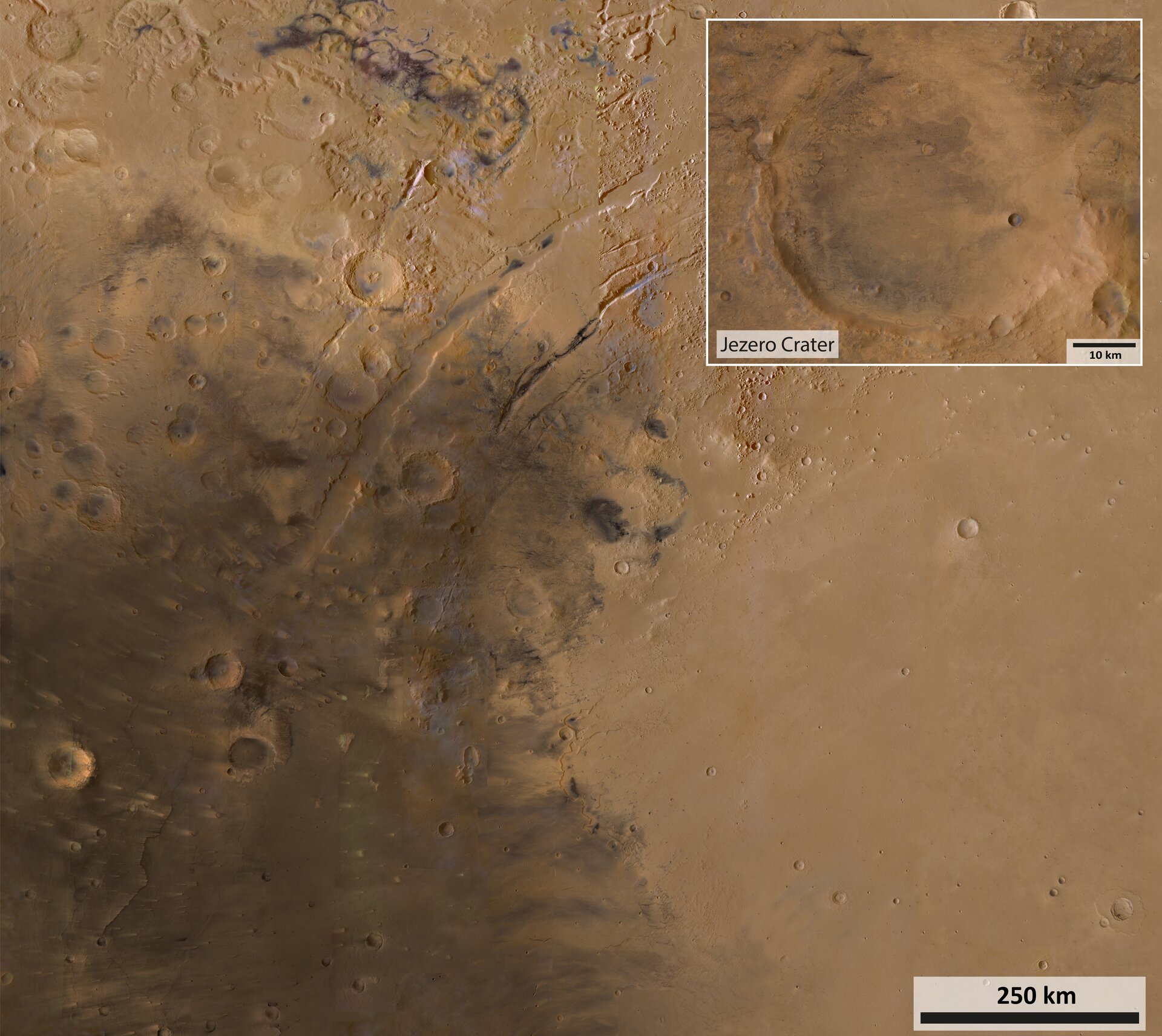- The Perseverance rover has discovered some surprising facts about Mars’ Jezero crater, which will help scientists understand more about the region and its geological history.
According to the experts, the rocks in the Jezero crater have been in contact with water numerous times, and some contain organic substances. Biological or non-biological processes can create these chemical molecules. Thus, they aren’t proof that life existed there, but they are a good indicator that evidence of it should be discovered if it did.
Furthermore, the scientists discovered that the crater’s igneous materials, having developed from lava flows or magma. This clarifies a significant concern about the crater’s nature, as geologists were previously uncertain whether the materials were volcanic or sedimentary.
In a statement, Perseverance Project Scientist Ken Farley of Caltech remarked, “I was beginning to think we would never find the solution.”
The PIXL (Planetary Instrument for X-ray Lithochemistry) analyses rocks and determines what they are made of using X-rays. Using PIXL on a sample named “Brac,” researchers discovered a peculiar structure that suggested igneous rock.
“A qualified geology student would tell you that such a pattern indicates that the rock was formed when crystals formed and settled in a slowly cooling magma – such as a thick lava flow, lava lake, or magma chamber,” Farley stated.
The water on the rocks was also confirmed, adding to the evidence that the Jezero crater was previously home to an ancient lake. Researchers are still debating how long water has been present at this location. Thus this find adds to our understanding of the region’s past.
“Water modified the rock several times after that, making it a treasure trove that will allow future scientists to date events on Jezero, better understand the period when water was more common on the planet’s surface, and reveal the planet’s early history” Farley said. “There will be a lot of great stuff to choose from during Mars Sample Return!”
Perseverance’s purpose includes collecting Martian rocks and dirt samples and sealing them in tubes for subsequent collection by another rover and ultimate delivery to Earth as part of the Mars Sample Return mission.

Ingenuity, the Mars helicopter, has reached a significant milestone in its mission:
During its 17th trip, Ingenuity reached this milestone. The helicopter has traveled 2.2 miles (3,592 meters) thus far on its mission, according to NASA’s Jet Propulsion Laboratory (JPL), “flying as high as 40 feet (12 meters) and even as fast as ten mph (5 meters per second).”
The helicopter, which was created as a technological demonstration — a test to see if flying a helicopter on Mars was possible — was only intended to fly for five bouts at first. It has, however, surpassed all expectations, overcoming challenges, including changing seasons on Mars, solar conjunction, and a communication issue with its rover companion Perseverance.
“Only a handful of people thought we’d make it to flight one, and even fewer thought we’d make it to flight five.” “And no one expected us to get this far,” said JPL’s Ingenuity Team Lead Teddy Tzanetos in a statement. “Ingenuity has endured eight months of harsh cold and operated out of nine different Martian airfields on its route to collecting nearly a half-hour aloft.” The aircraft’s sustained operation demonstrates the design’s sturdiness, as well as the dedication and enthusiasm of our tiny operations staff.”
One of the difficulties of flying on Mars is staying aloft in the fragile atmosphere, which is only 1% the density of Earth. To make matters worse, the shifting Martian seasons had resulted in a considerably lower air density than when Ingenuity and Perseverance arrived. Ingenuity has completed another flight since the news that it had reached the 30-minute milestone in the air.
On Mars, NASA discovered evidence of the building elements of life:
Perseverance, NASA’s Mars rover, discovered organic compounds, which are the building blocks of life, on the planet. On Wednesday, the rover’s creators revealed the discovery. It’s not precisely the proof of life that many had hoped for, but it’s an exciting find nevertheless.

Perseverance led to the discovery of carbon-containing organic compounds in rocks on Mars’ surface. They discovered the compounds in the rocks surrounding the Jezero Crater. The rover performed a preliminary investigation of the stones and identified the chemicals. On the other hand, Perseverance is returning to Earth with a sample. There, scientists will investigate the origins of organic molecules in greater depth.
The finding is significant in the quest to establish human life on Mars. However, it’s crucial to emphasize that this isn’t proof that life on Mars ever existed. Organic substances, such as carbon, are fascinating because they can be made biologically and non-biologically. As a result, scientists will need to dig deeper into the rocks to figure out where the chemicals came from.
Examining the rocks will also provide further information about the Jezero Crater. This comprises the sequence of important events. For one thing, scientists have already determined that the crater’s rocks had come into contact with water several times. They may learn more about the rocks’ origins with these fresh samples.
It’s taken a long time to explain the origins of specific elements on Mars. In a statement on the discovery, Perseverance Project Scientist Ken Farley commented, “I was beginning to think we would never uncover the answer.”
According to Farley, the rock appears to have developed as crystals grew and settled in slow-colling lava. That might be possible in the presence of a thick lava lake or lava flow. Water also had an impact on the rock, according to Farley.
All of these occurrences might have aided in creating the organic compounds identified by Perseverance. These samples potentially contain a gold mine of information on what transpired in the Jezero Crater. This information might potentially help us better comprehend the period when water was more abundant on the planet’s surface.
Also Read: The Intel Core I9-12900KS Has The Potential To Drive Alder Lake Cpus To New Heights